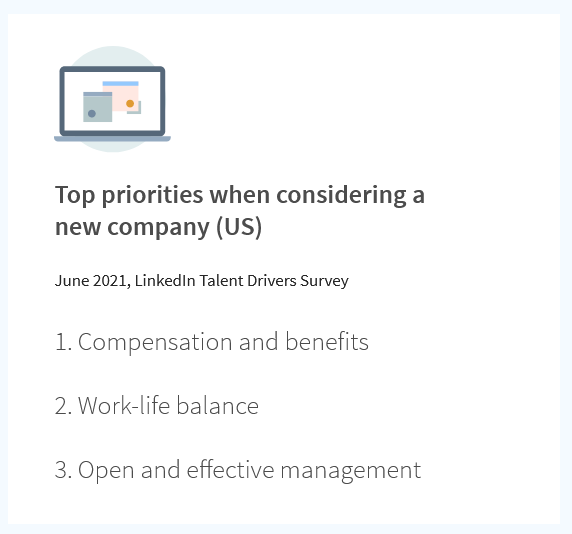As organizations nationwide have deepened their commitment to DEI in recent years, many have turned their attention to salary transparency. While openly discussing and posting salary was long considered taboo, that sentiment is changing – and for good reason.
Read on to discover five reasons why more and more organizations are choosing to disclose salaries earlier during the hiring process…
1) It’s a matter of law.
More and more local and state governments are passing salary transparency laws. States such as California, Maryland, and Connecticut already have laws that require salary ranges to be disclosed at particular points in the hiring process. In 2021, Colorado enacted some first-in-the-nation requirements that necessitate salary and benefits be shared in job postings. Other locales, such as New York City and Washington State, have passed similar disclosure laws that will go into effect in late 2022 and early 2023.
If you work in a region that has yet to enact such laws, you have a valuable opportunity to be ahead of the curve. By disclosing salaries in job descriptions, you position your organization as a leader ahead of policy, who is attuned to emerging trends and changes in the marketplace.
2) It can increase candidate applications.
 A June 2021 survey from LinkedIn Talent Drivers found that the top priority for candidates when considering a new company was compensation and benefits. Meanwhile, another LinkedIn study found that when viewing a job description, the vast majority of candidates ranked the salary range and benefits as the most important information. Furthermore, posting the salary may attract candidates who would have otherwise overlooked the opportunity; an Indeed survey of 1,500 people found that 56% were more likely to apply for a company they weren’t familiar with if the salary range was listed. And not only is salary transparency important to candidates who are actively seeking new roles, it can be an important tool for recruiters who are looking to capture the interest of talented professionals who aren’t currently in the marketplace. By choosing to share the salary, you will stand out among selective jobseekers in a competitive hiring landscape.
A June 2021 survey from LinkedIn Talent Drivers found that the top priority for candidates when considering a new company was compensation and benefits. Meanwhile, another LinkedIn study found that when viewing a job description, the vast majority of candidates ranked the salary range and benefits as the most important information. Furthermore, posting the salary may attract candidates who would have otherwise overlooked the opportunity; an Indeed survey of 1,500 people found that 56% were more likely to apply for a company they weren’t familiar with if the salary range was listed. And not only is salary transparency important to candidates who are actively seeking new roles, it can be an important tool for recruiters who are looking to capture the interest of talented professionals who aren’t currently in the marketplace. By choosing to share the salary, you will stand out among selective jobseekers in a competitive hiring landscape.




